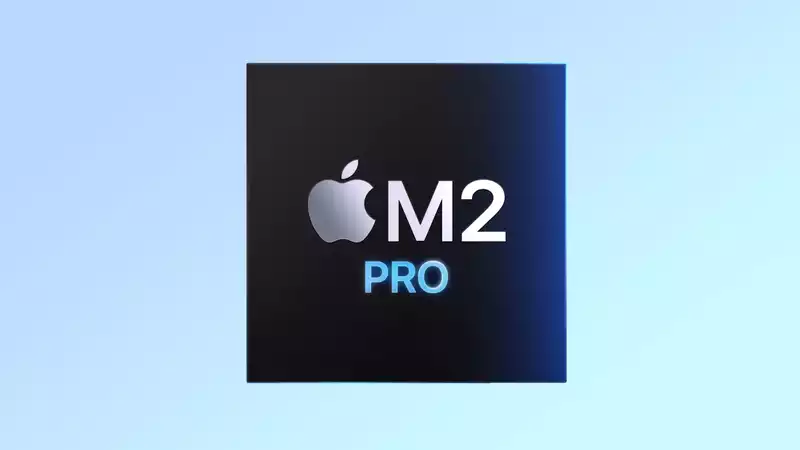The new Apple M2 Pro chip is now available and offers significantly more performance than the M1 Pro chip.
The leap in power between the M1 and M1 Pro chips is impressive, and the latest slice of Apple silicon shows similar improvements to the M2 chip in the MacBook Air 2022 and MacBook Pro 13-inch M2.
The M2 Pro chip is found in the new Mac mini M2, MacBook Pro 14-inch, and MacBook Pro 16-inch laptops. The latter machines have the M2 Pro chip by default, but can be upgraded to the more powerful (and expensive) Apple M2 Max processor.
The M2 Pro chip is not as powerful as the M2 Max, but as noted in our review of the Apple MacBook Pro 14-inch (2023), it currently performs better than the older M1 Pro chip. Here is everything you need to know about the new M2 Pro.
Both the entry-level 14-inch and 16-inch MacBook Pro have M2 Pro chips. However, the 16-inch laptop has a more powerful M2 Pro model than the entry-level 14-inch model.
The MacBook Pro 14-inch comes in a variety of configurations, with base models starting at $1,999/£2,149/AU$3,199. This version has an M2 Pro chip with a 10-core CPU, 16-core GPU, and 16-core neural engine. It also has 16 GB of RAM and a 512 GB SSD for storage.
For $2,499, one can get the M2 chip with a 12-core CPU, 19-core GPU, and 16-core neural engine; it also includes 16GB of RAM and 1TB of storage.
The M2 Pro chip has a 10- or 12-core CPU with up to eight high-performance cores and four high-efficiency cores, which Apple claims is 20% more powerful than the M1 Pro. The new chip has a unified memory bandwidth of 200 GB/s, double that of the base M2 chip, and can accommodate up to 32 GB of RAM. According to Apple, the chip's 19-core GPU improves graphics performance by up to 30%, and the Neural Engine is 40% faster.
What about for professional users? According to Apple, the M2 Pro, with 40 billion transistors, nearly 20% more than the M1 Pro, is up to 40% faster than its predecessor in Photoshop image processing and 80% faster than the fastest Intel-based MacBook Pro with a Core i9 processor. That's a lot of power, indeed. That's a lot of power, indeed.
The M1 Pro, on the other hand, has 33.7 billion transistors and a 10-core CPU with eight performance cores and two efficiency cores. It supports up to 32 GB of RAM and has a memory bandwidth of up to 200 GB/s. However, the least expensive 14-inch MacBook Pro 2021 configuration has an M1 Pro chip with an 8-core CPU; the M1 Max also has a 10-core CPU, but with 57 billion transistors (more than three times the original M1), supports up to 64GB of RAM, and has a memory bandwidth memory bandwidth of up to 400 GB/second.
The M2 Pro does not allow upgrading to more than 32GB of RAM when configuring a MacBook Pro; if you need 64GB or even 96GB, you must choose a version with the M2 Max chip.
The MacBook Pro series is named "Pro" because it is targeted at creative professionals who need a powerful laptop to realize their projects. This is also true of the new MacBook Pro.
Both the M2 Pro and M2 Max feature hardware-accelerated video encoding and decoding, including support for H.264, HEVC, and ProRes. According to Apple, this enables playback of multiple streams of 4K and 8K ProRes video with negligible power consumption. The latest image signal processor also has better noise reduction and, along with a neural engine, uses computational video to improve the camera's image quality.
Note that the M2 Max chip has a more powerful hardware-accelerated media engine than the M2 Pro and the previous generation M1 Pro and M1 Max. The M2 Max has two video encoding engines and two ProRes engines, which Apple claims it can deliver up to twice the video encoding speed of the M2 Pro.
The new MacBook Pro appears to support HDMI 2.1. 0 is supported. This allows connection to external displays with resolutions up to 8K (60Hz) or 4K (240Hz).
When connecting multiple displays, the HDMI connection supports up to 6K resolution at 60Hz or two monitors, one at 6K/60Hz and the other at 4K/144Hz.
The more robust M1 Max chip supports up to four external displays.
The M2 Pro is an exciting piece of silicon from Apple that enhances the experience of getting things done on the MacBook Pro. it may not be as powerful as the M2 Max processor, but according to our own review, it is an improvement over the previous model.
The M2 Pro should help MacBook Pro users get video editing work done on the go. The chip (and its more enhanced counterpart, the M2 Max) could also make the MacBook Pro a desktop replacement. As with the previous generation of Apple silicon, the Cupertino-based tech giant will likely have a competitive edge in the laptop market that other manufacturers cannot compete with.
.









Comments